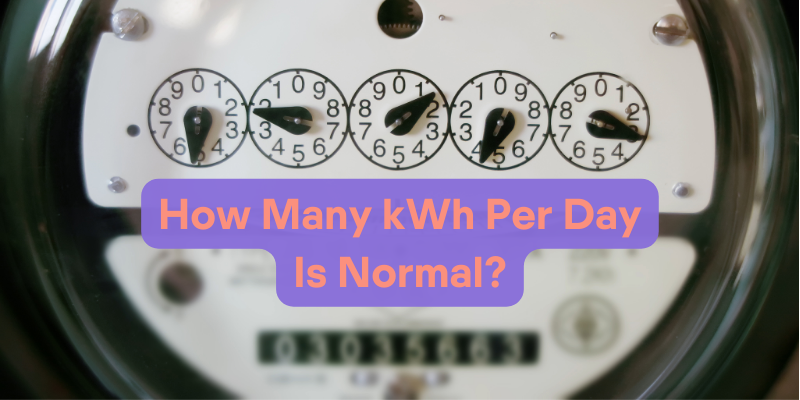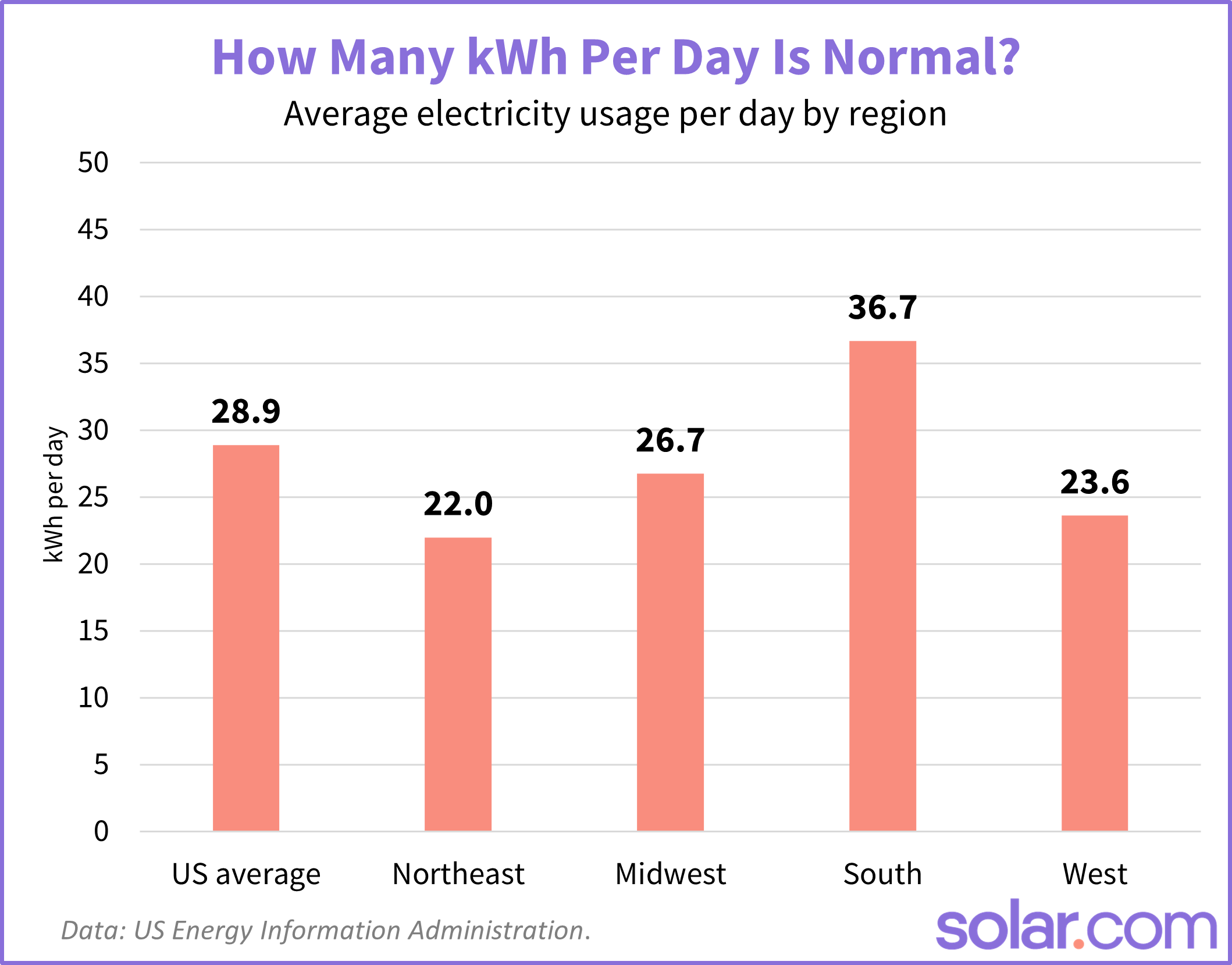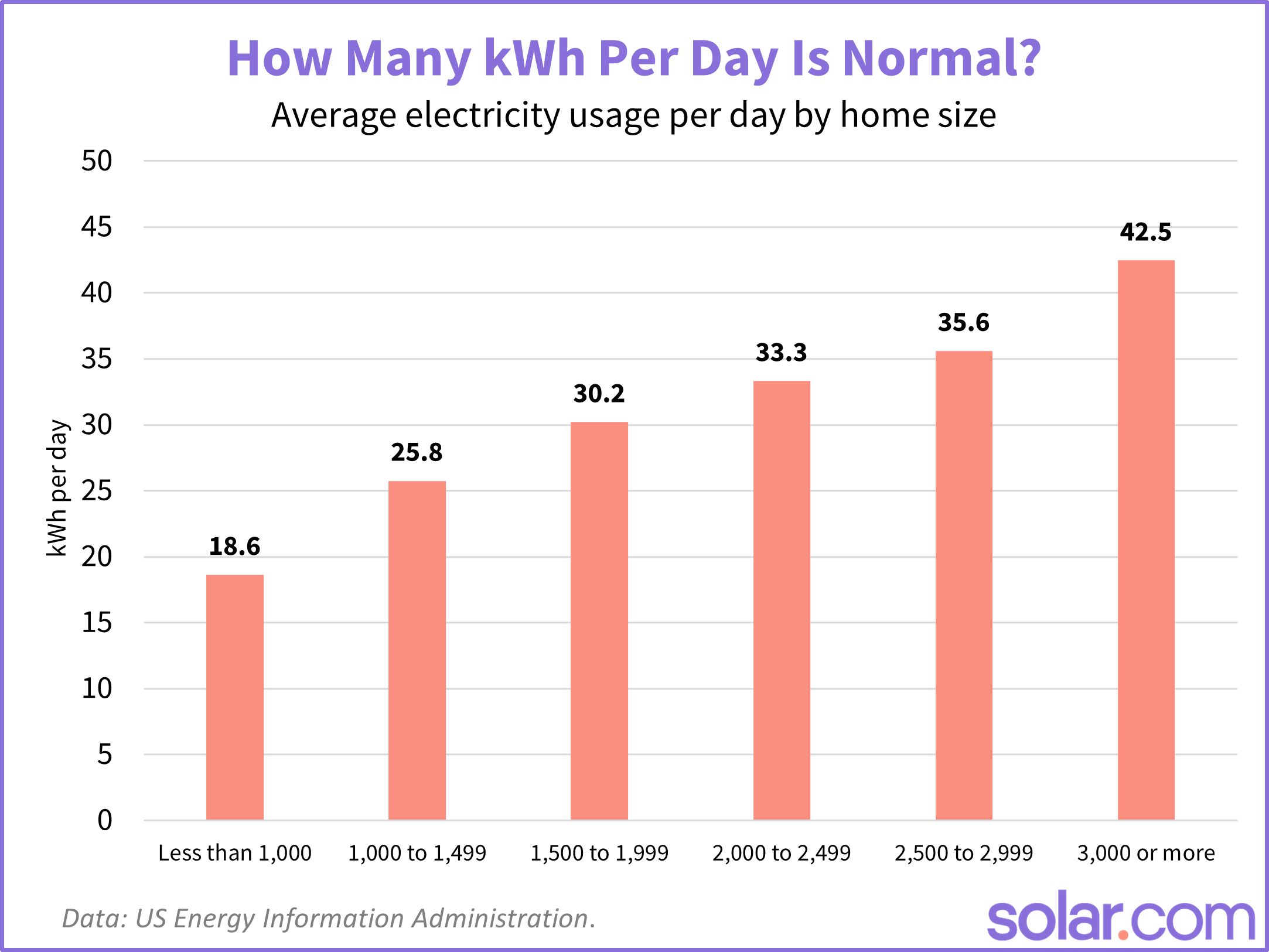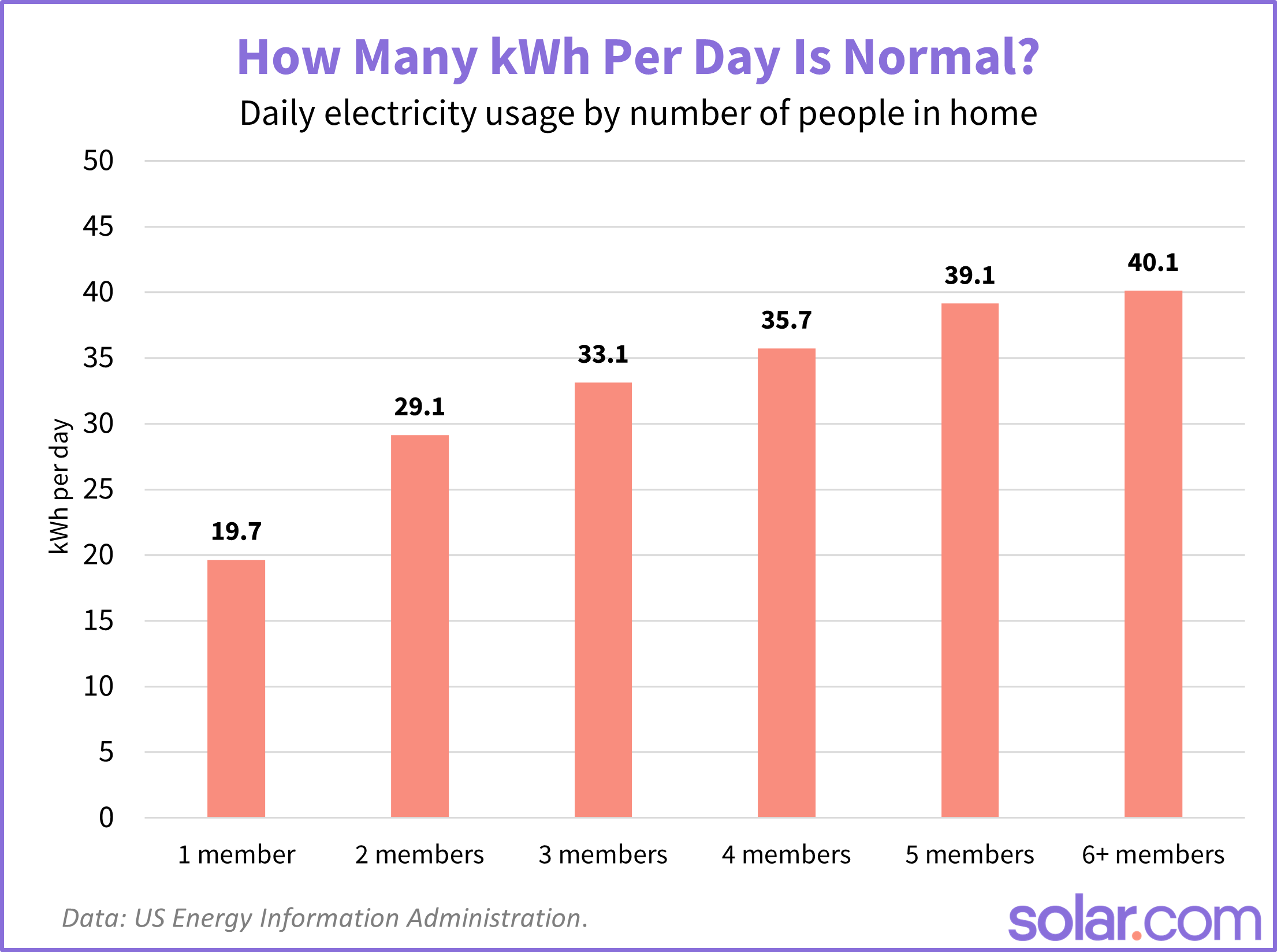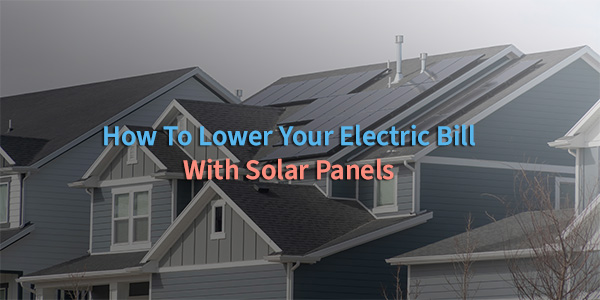There are a zillion articles and videos promising “expert tips” for how to lower your electric bill. Spoiler alert: 99% of them focus solely on reducing consumption and have no actionable advice for lowering your rate.
We’re here to shake things up a bit.
We’re all for conserving electricity, but usage is only half of the equation for electricity bills and it can only realistically be reduced so far. In fact, if you are experiencing high electricity bills, it’s far more effective to reduce your rate than to shave your consumption down one kilowatt-hour at a time .
So, in this article, we’re going to skip over turning off lights and unplugging appliances to focus on the meaningful ways to lower your electric bill.
In this article:
Let’s start with a quick investigation of what causes high electricity bills.
What causes high electric bills?
High electricity bills are typically caused by a combination of extreme weather and utility rate hikes. For example, intense or prolonged heat waves cause homeowners to use more electricity for air conditioning. Meanwhile, utility electricity prices increased in 2022 at the highest rate in 40 years.
Each of these forces on their own can cause electricity bills to increase substantially. But when combined – as they have been in the summer of 2023 – they create the perfect storm for high electricity bills.
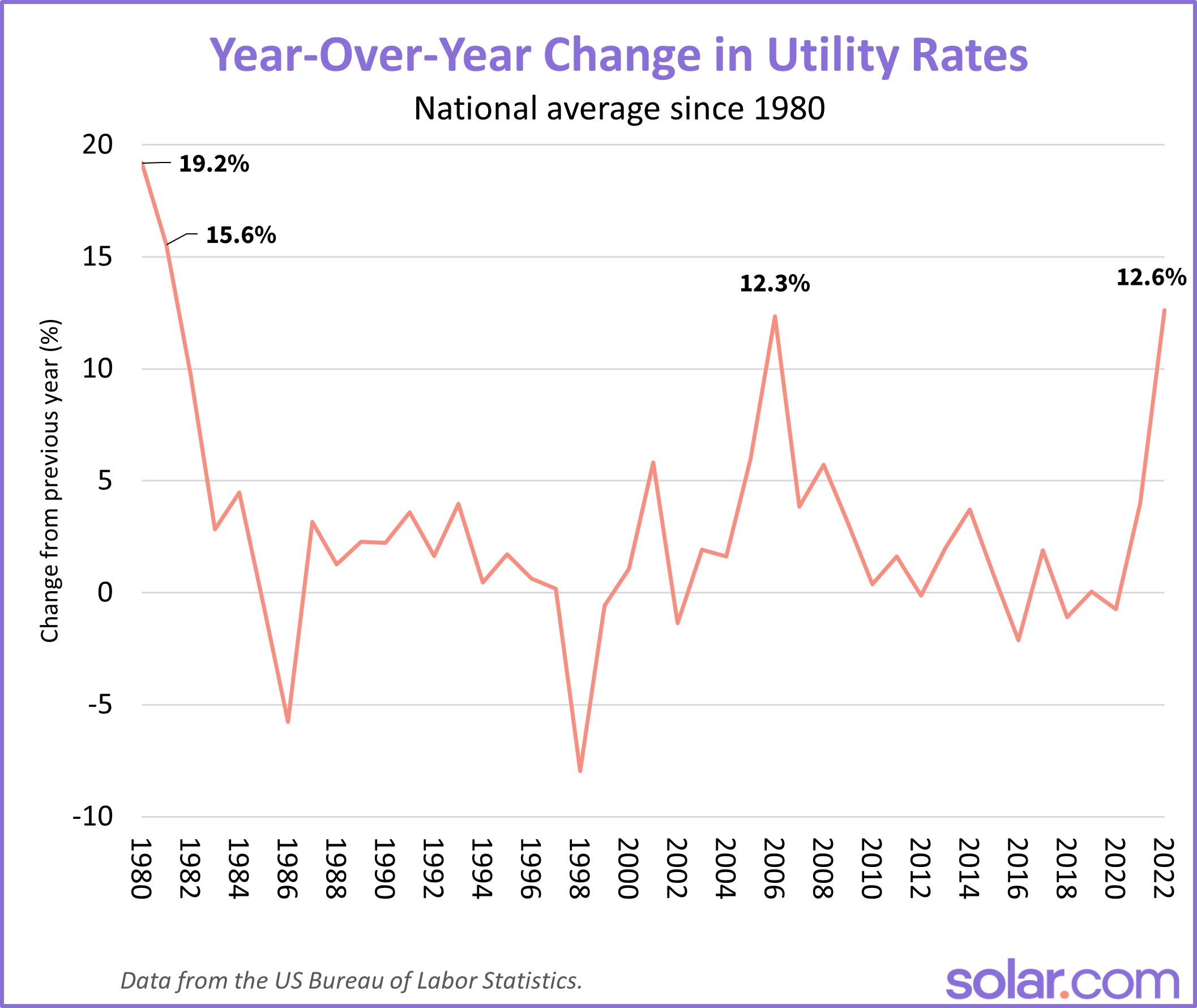
So, what can we do about it?
How to save on your electric bill
There are three ways to save money on your electric bill: Lower your rate, reduce consumption, and conserve electricity. Most articles – and homeowners – tend to focus solely on reducing consumption with things like upgrading to LED lightbulbs, unplugging devices, sealing doors and windows, and fine-tuning the thermostat.
But we find it more effective – and realistic – to focus on lowering your rate. Here are two reasons why.
Why it’s time to focus on lowering your electricity rate
First, electricity consumption isn’t easy to control. Typically 30-50% of household electricity consumption is from heating and cooling, which is largely dependent on the weather and extreme weather events. For example, during the prologned 2023 summer heat wave, Phoenix saw at least 19 consecutive days with temperatures above 110 degrees (the streak is still going as I’m writing this!), forcing residents to keep their ACs humming or risk heat-related illnesses and deaths.
Second, conserving electricity is a wonderful thing, and anything you can do to prevent waste is a win in our book, but having high electricity consumption isn’t necessarily a bad thing, economically and environmentally, if you are using it efficiently and in place of fossil fuels.
The prime example is home electric vehicle (EV) charging. Charging an EV at home is many times cleaner, more convenient, and more cost-effective than fueling a combustion vehicle at a gas station. But it will also make your electricity bill increase substantially.
The same goes for electrifying your stove, water heater, clothes dryer, and heating and cooling systems.
In fact, if the goal is to cut your overall energy costs, then home electrification is the way to go for four reasons:
- Electricity is cheaper (and cleaner) than fossil fuels
- Electrical systems are far more efficient than combustion systems
- There are robust incentives for home electrification upgrades
- You can control the price you pay for electricity
The last point is the most important, because unless you have an inside man at OPEC, there is virtually nothing you can do about the price of fossil fuels for your car or home. However, home solar gives you the power to lower your electricity rate.
Lowering your electricity rate with solar panels
At its core, home solar is a way to buy electricity in bulk. And if we’ve learned anything from Costco, it’s that buying in bulk is a great way to reduce the cost of essential items and save a ton of money over time.
So, what does that look like for electricity? The metric to focus on is Levelized Cost of Electricity (LCOE), which is essentially the price you pay per kilowatt-hour (kWh) of electricity that you use (aka your utility rate). You can find your LCOE by taking your electricity costs and dividing it by your electricity consumption.
For example, let’s say you live in California and you paid $1,765 for 6,504 kWh of electricity over the course of a year. That would bring your LCOE to 27.15 cents per kWh.
$1,765 / 6,504 kWh = $0.2715 per kWh
Even easier, just look up your electricity rate on your utility bill. For reference, the national average price of electricity in June 2023 was 17 cents per kWh, according to the US Bureau of Labor Statistics.
Now that you have a score to beat, let’s see how to find the LCOE of a solar system.
What’s the price per kWh of home solar?
The price per kWh of solar varies from system to system depending on the size and scope of the project, how it’s financed, and the incentives available in the area.
For example, a larger system purchased with cash can typically produce electricity at around 6-8 cents per kWh, after the 30% solar tax credit is applied. A smaller, more complex project that’s financed with a loan may produce electricity at closer to 12-14 cents per kWh.
The amazing thing is that homeowners can effectively control their price per kWh by choosing:
- The size of their system
- The equipment and installers they choose
- Which incentives they claim
- How they finance the project (cash or loan)
The easiest way to find the cost per kWh of home solar is to generate and compare binding quotes from solar.com’s network of vetted installers. However, you can get a ballpark figure by taking the net cost of the system (after incentives) and dividing it by the estimated production over 25 years.
How to calculate the cost per kWh of home solar
Let’s say you buy a 6 kW system for $25,000. Between the 30% tax credit and the interest on a 12-year loan, the net cost of the system comes to $23,000.
Factoring in 5.5 hours of sunshine per day and typical degradation, this 6 kW system can be expected to produce a total of 219,500 kWh of electricity throughout its 25-year warrantied life. That brings the price per kWh – or levelized cost of electricity – to 10.48 cents per kWh.
$23,000 / 219,500 kWh = $0.1048 per kWh
This is 38% lower than the average electricity rate in the US, and a 60% reduction in higher cost states like California, Massachusetts, and Connecticut. You can cut and conserve as much electricity as you’d like, but it’s unrealistic to sustain a 40-60% reduction in an era of electrification and climate change.
How does solar lower your electricity bill?
Home solar reduces your monthly electric bill in two ways: By offsetting your grid consumption with net metering credits and by reducing your grid consumption altogether (aka “behind the meter” savings). With a properly sized solar system that produces 100% or more of your electricity usage, your electricity costs become the fixed monthly payments on your solar and/or battery equipment, which are much lower than the cost of grid electricity over time.
Net metering: Offset your grid usage
Most residential solar systems use net metering to trade electricity back and forth with the local utility grid. In net metering, homeowners earn credits for the electricity their solar system pushes onto the grid, and use those credits to offset the cost of electricity they pull off the grid at night.
A system sized to produce 100% of a household’s average electricity consumption can effectively reduce the electricity bill completely, aside from certain fixed charges that can’t be offset, and your electricity costs are the predictable monthly payments for your solar system.
Depending on how you finance the system, your solar payments may be higher or lower than your electricity bill at first, as shown in the table below for a household using 750 kWh per month.
| Electricity source |
LCOE |
Monthly cost (first year) |
| Grid – National Average |
17 cents per kWh |
$127.50 |
| Grid – High cost states |
25 cents per kWh |
$187.50 |
| Solar – Cash |
10.48 cents per kWh |
$0 |
| Solar – 12-year loan* |
10.62 cents per kWh |
$161.86 |
| Solar – 20-year loan* |
12.62 cents per kWh |
$115.50 |
*Based on APR rate of 5%. All solar options for 6 kW system with net price of $17,500 after claiming the 30% tax credit.
But the thing about electricity rates is that they keep rising over time. So, even if your solar payment starts out higher than your average electricity bill, it won’t stay that way for long.
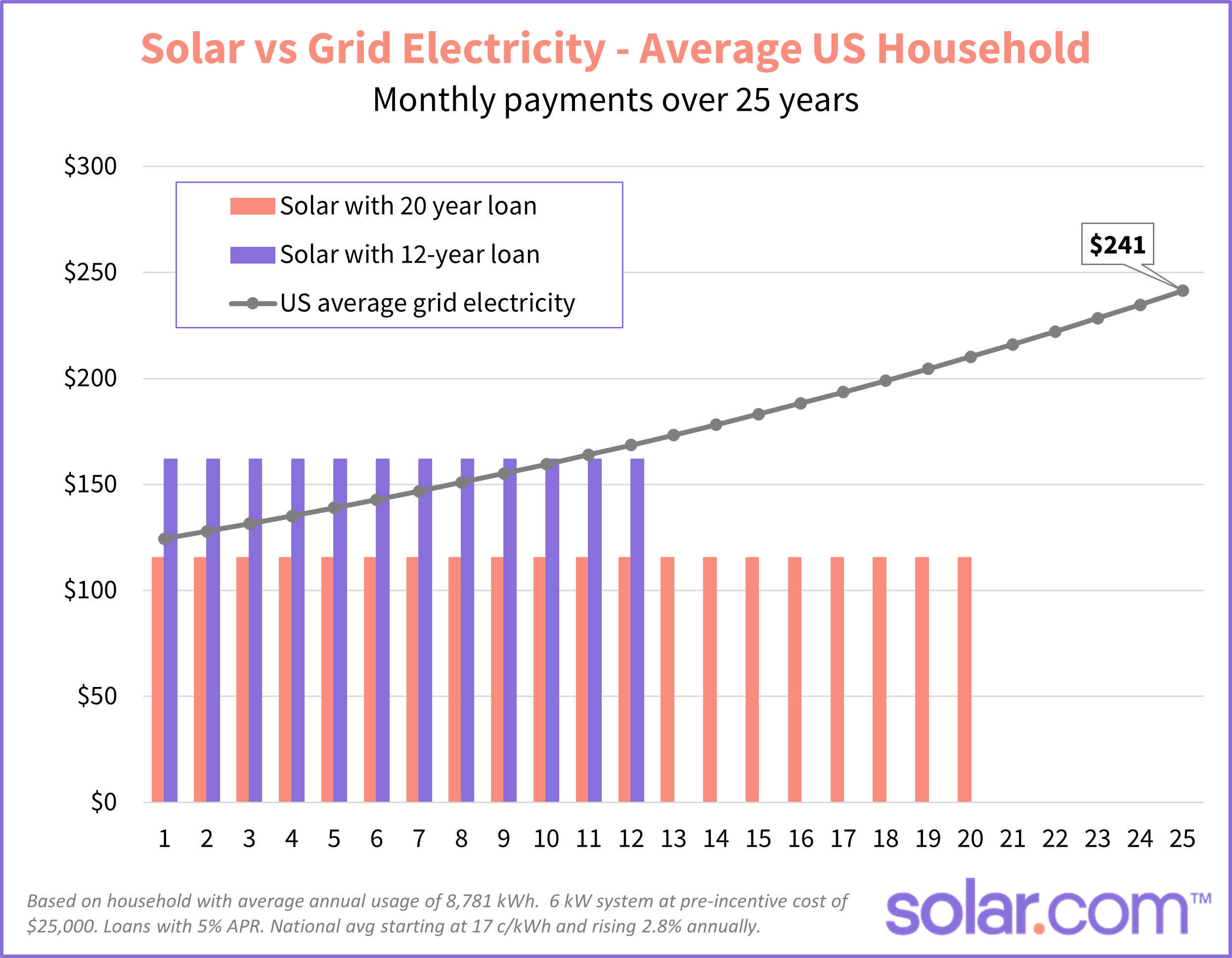
The point is that solar gives you options for lowering your electric bill. You can:
- Pay cash to get the greatest lifetime savings
- Take out a 20-year loan to start saving on Day 1
- Take out a 12-year loan to a steady payment and substantial lifetime savings
It’s worth noting that net metering isn’t offered everywhere, and in some places (namely California) the credit value of excess solar electricity is far less than the price of using grid electricity. In this case, it’s better to reduce your grid consumption as much as possible.
Battery storage: Reduce your grid usage
The second way is by using battery storage to reduce the homeowner’s reliance on the grid altogether to lower their electricity bill. With a properly sized solar and battery system, a household can produce, store, and use all of its own solar electricity.
Batteries are most known for their ability to provide backup power. However, they also perform a function called “load shifting,” which is essentially storing the cheap electricity produced by solar systems to avoid using expensive electricity from the utility grid.
Given the cost, it can be tough to achieve Year 1 electricity bill savings with a solar and battery system. However, under NEM 3.0 solar billing in California, solar and battery typically yield greater savings than solar-only systems.
Solar is key to a lower electric bill
Home solar gives homeowners unprecedented control over their electricity rate, which is crucial to cutting essential electricity costs. Using net metering and/or battery storage, homeowners can replace the cost of buying electricity from their utility with predictable payments for their solar system – leading to substantial energy cost savings over the 25 year life of the system.
High electricity consumption is not necessarily a bad thing, if it’s being used efficiently and in place of fossil fuel systems. With that in mind, focusing solely on cutting consumption (as many articles do) is an unrealistic way to lower an electric bill.
With that said, the most effective way to lower your electric bill is through a combination of installing solar panels, reducing consumption, and conserving electricity.
Connect with an Energy Advisor to see how much you can save with solar.
How to lower your electric bill FAQs
Does unplugging appliances save electricity?
Unplugging certain appliances when they are not in use can save the average household up to $100 per year in electricity costs, according to the US Department of Energy. Standby power or vampire power — the electricity consumed by appliances that are off but still plugged in — accounts for 5-10% of residential electricity use. This can be reduced by uplugging appliances when not in use, using a power strip, or upgrading to energy efficient products with lower standby power usage.
Why is my AC bill so high?
AC bills (aka the electricity consumption associated with air conditioning) get higher during the summer when the units are running more frequently and for longer periods of time. Air conditioning costs can also increase due to heatwaves or if the AC unit is not functioning properly. To decrease your AC costs, have a professional tune up your machine, decrease your usage by setting a higher indoor temperature, or install solar panels to decrease the price you pay for electricity.
Why is my electric bill $500?
The average electricity bill in the United States varies from $85 in Utah to over $245 in Connecticut, so a $500 monthly bill is very high. This is likely due to a combination of increased usage (EV charging, prolonged air conditioning, pool or hot tub heating, etc) and/or a significant electricity rate hike by your utility. There could also be an appliance malfunctioning or left running that is using an abnormal amount of electricity.
